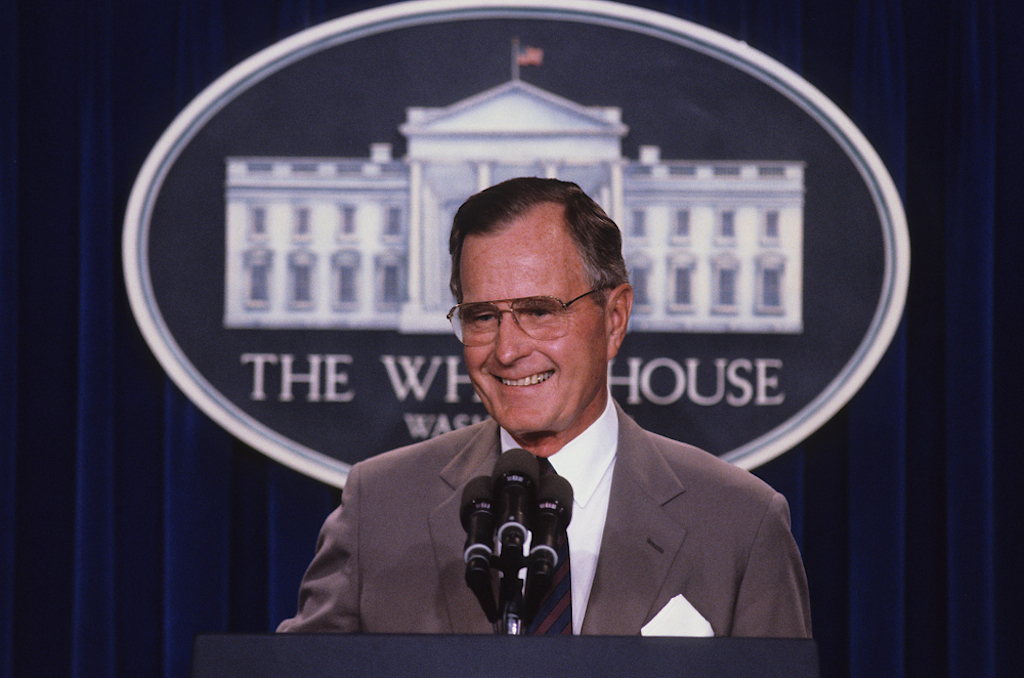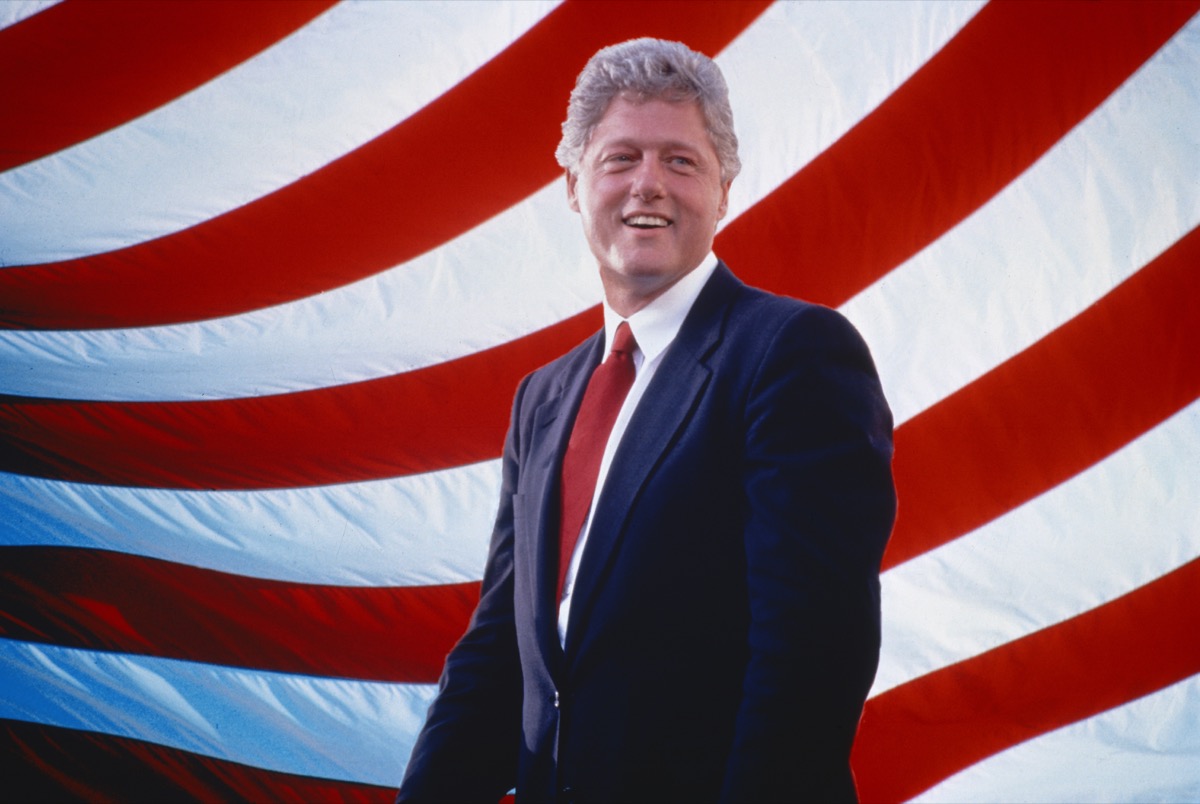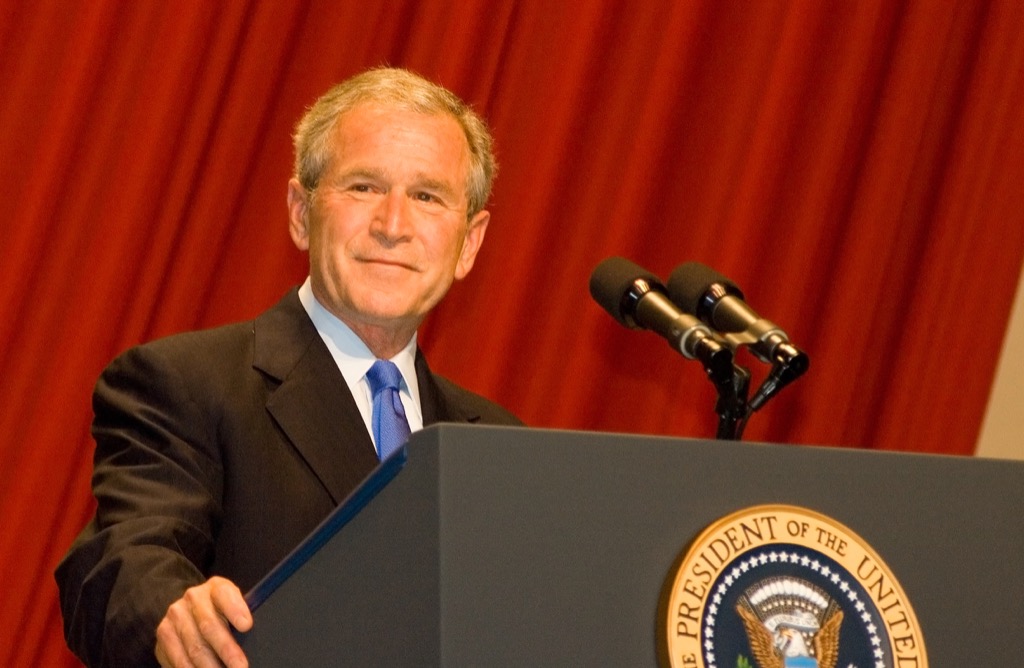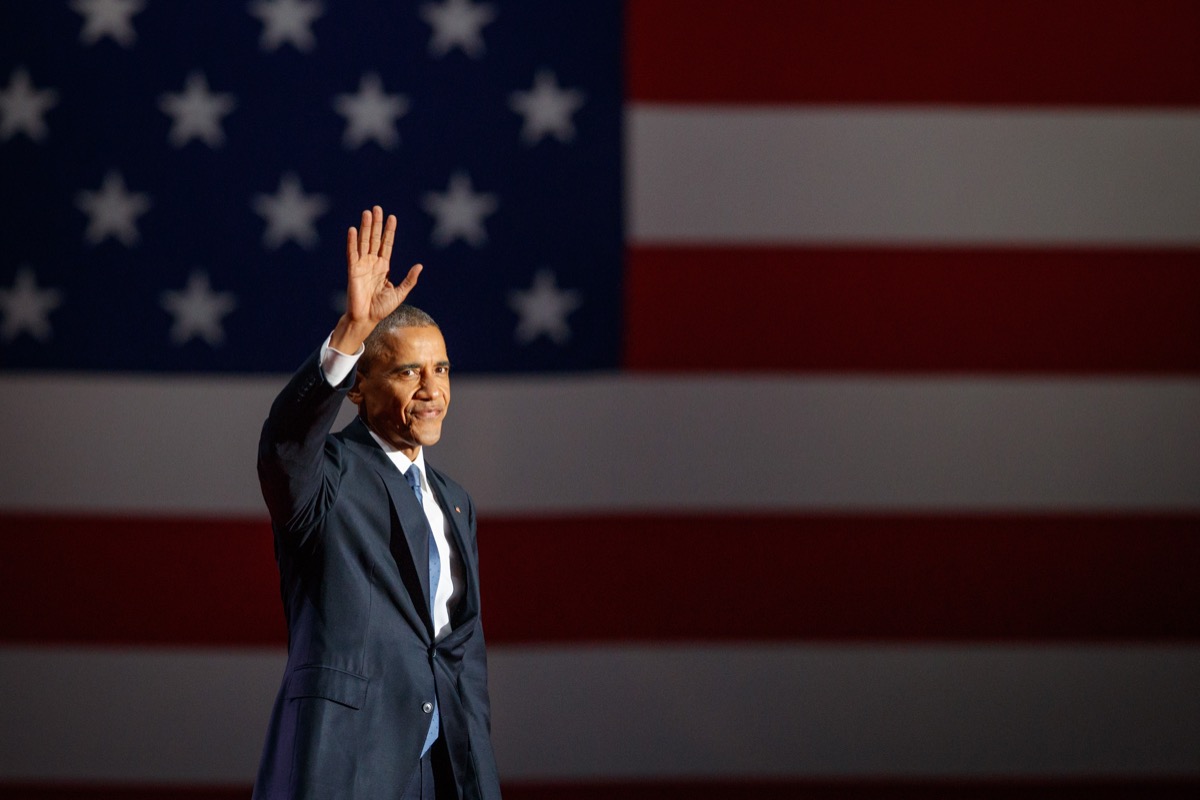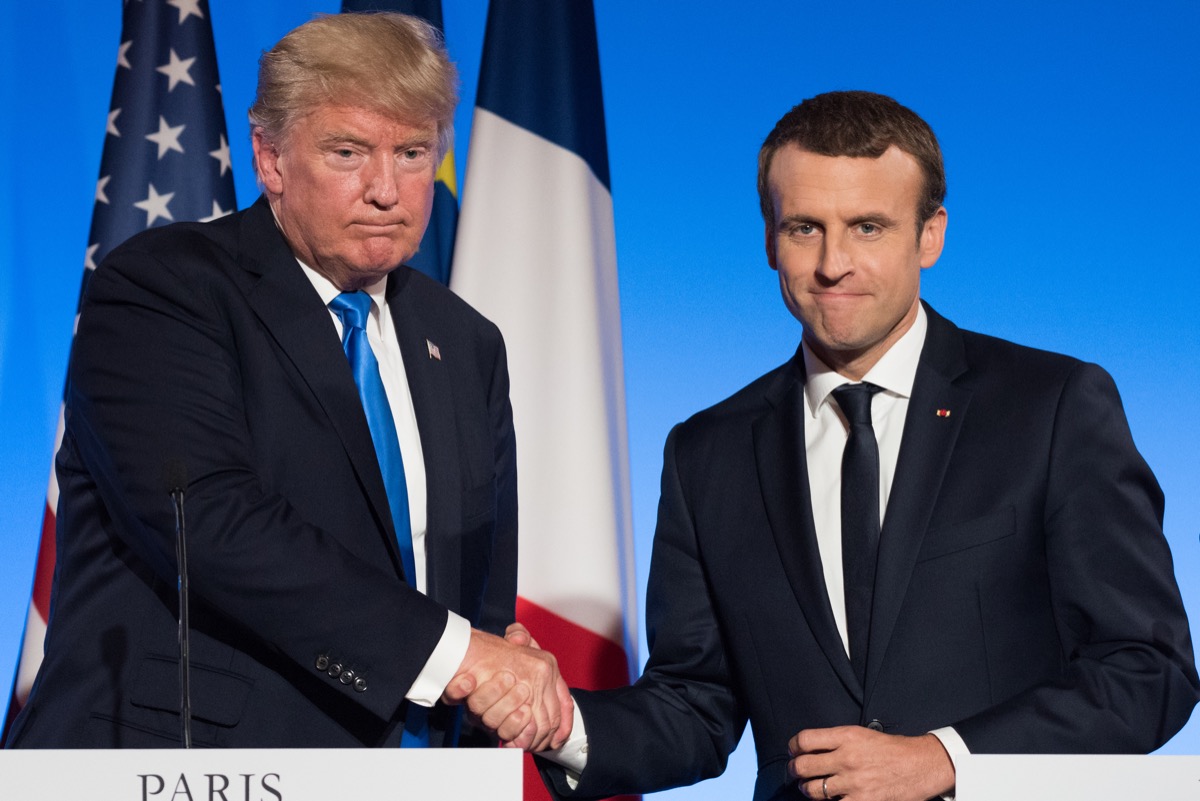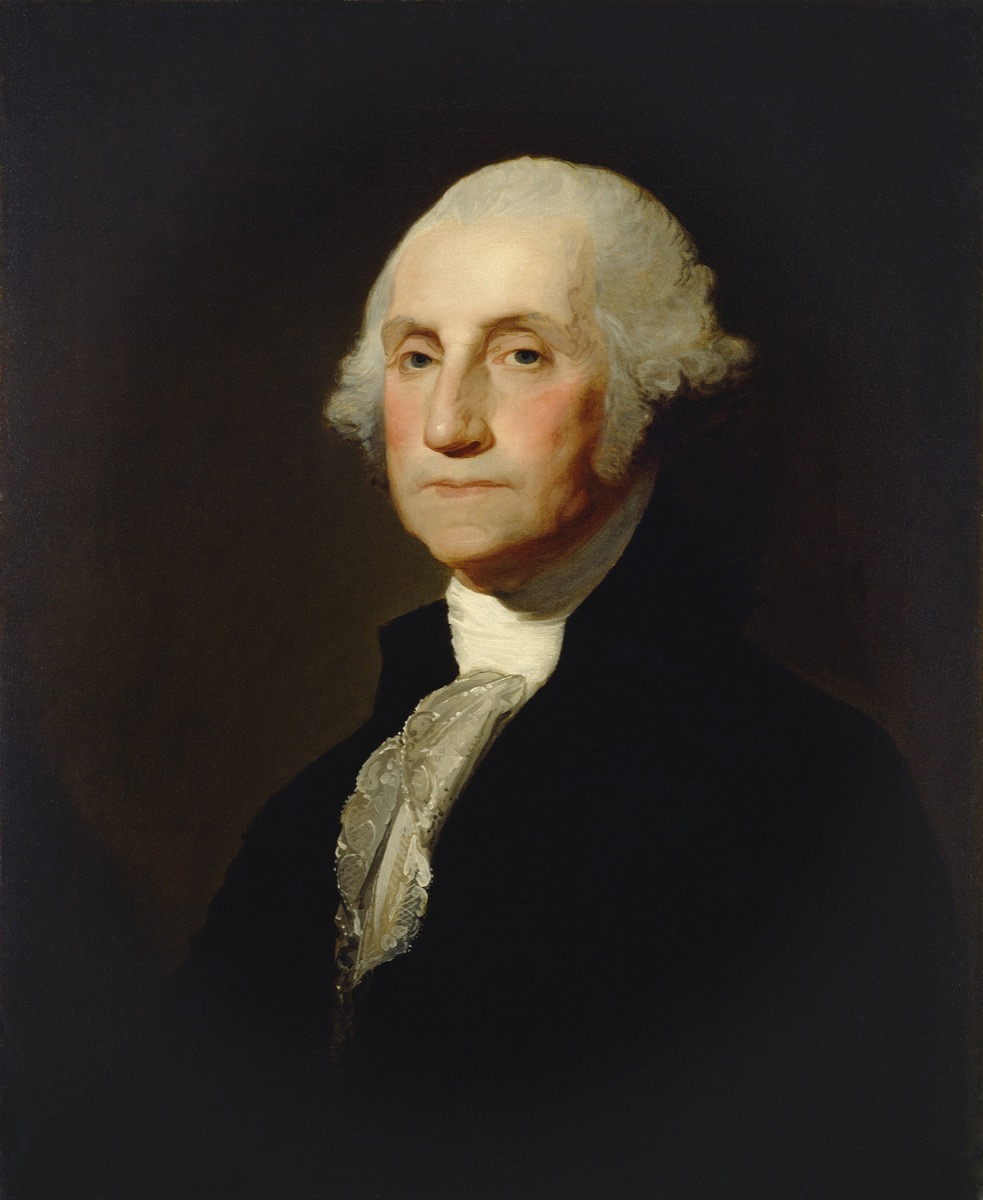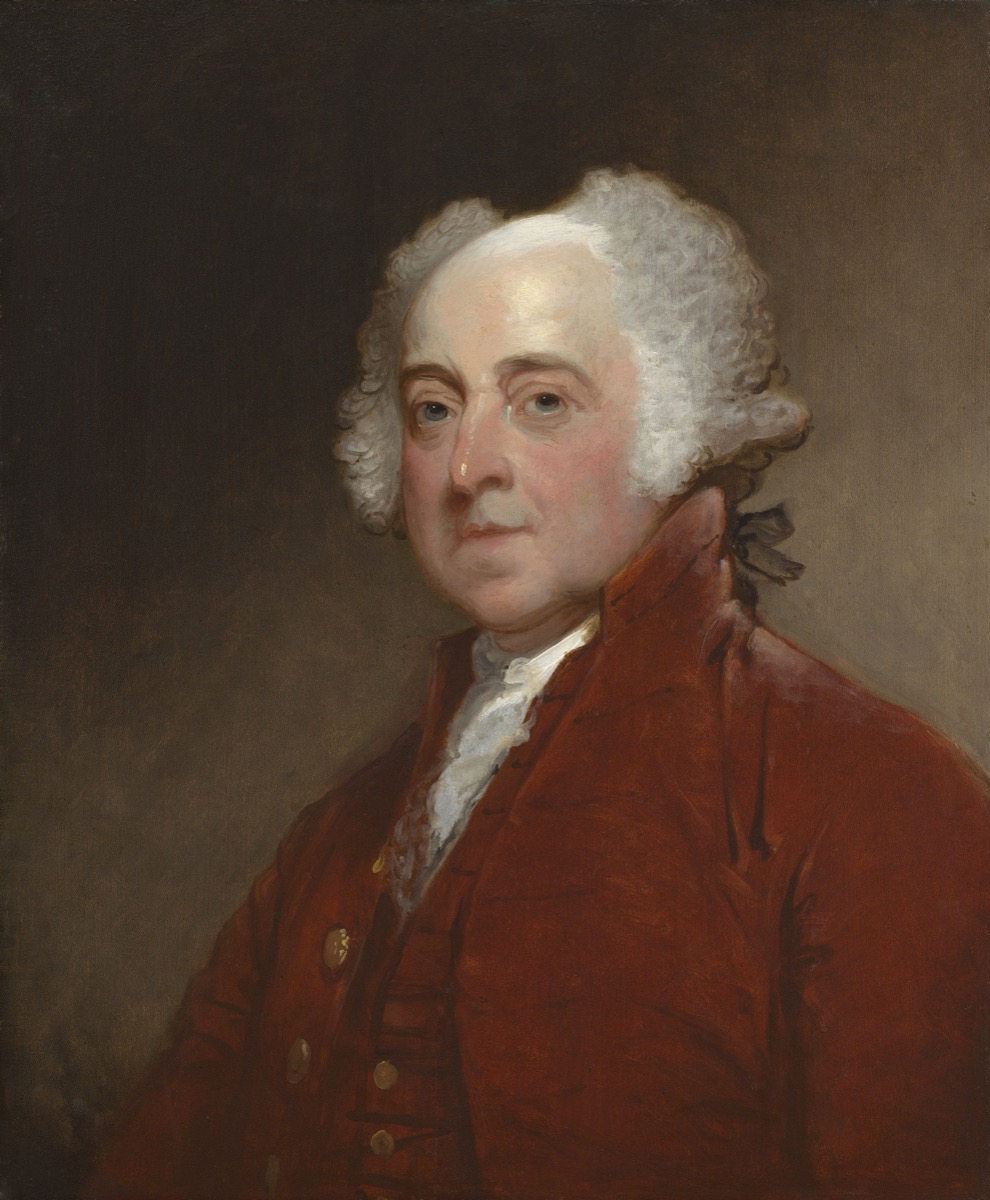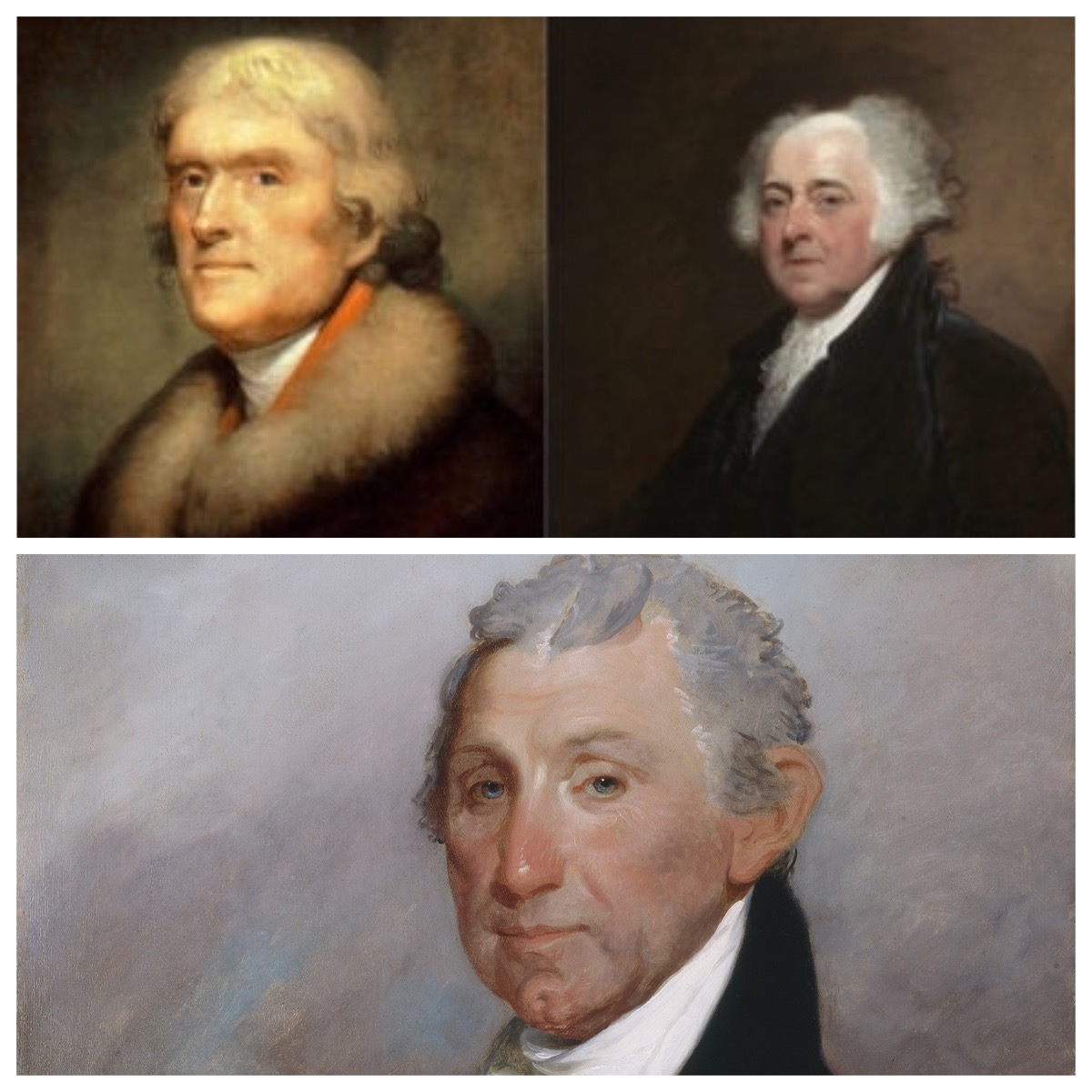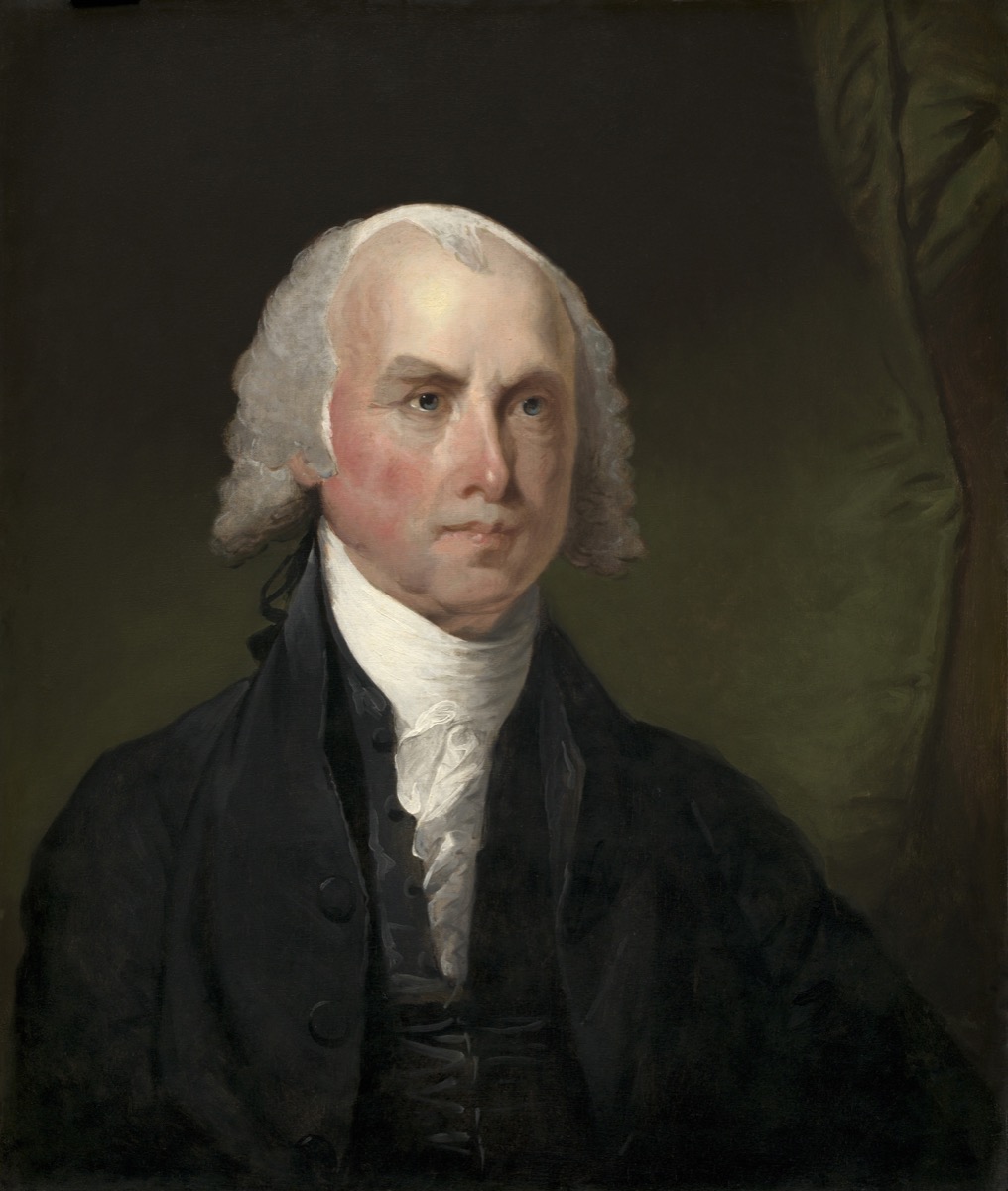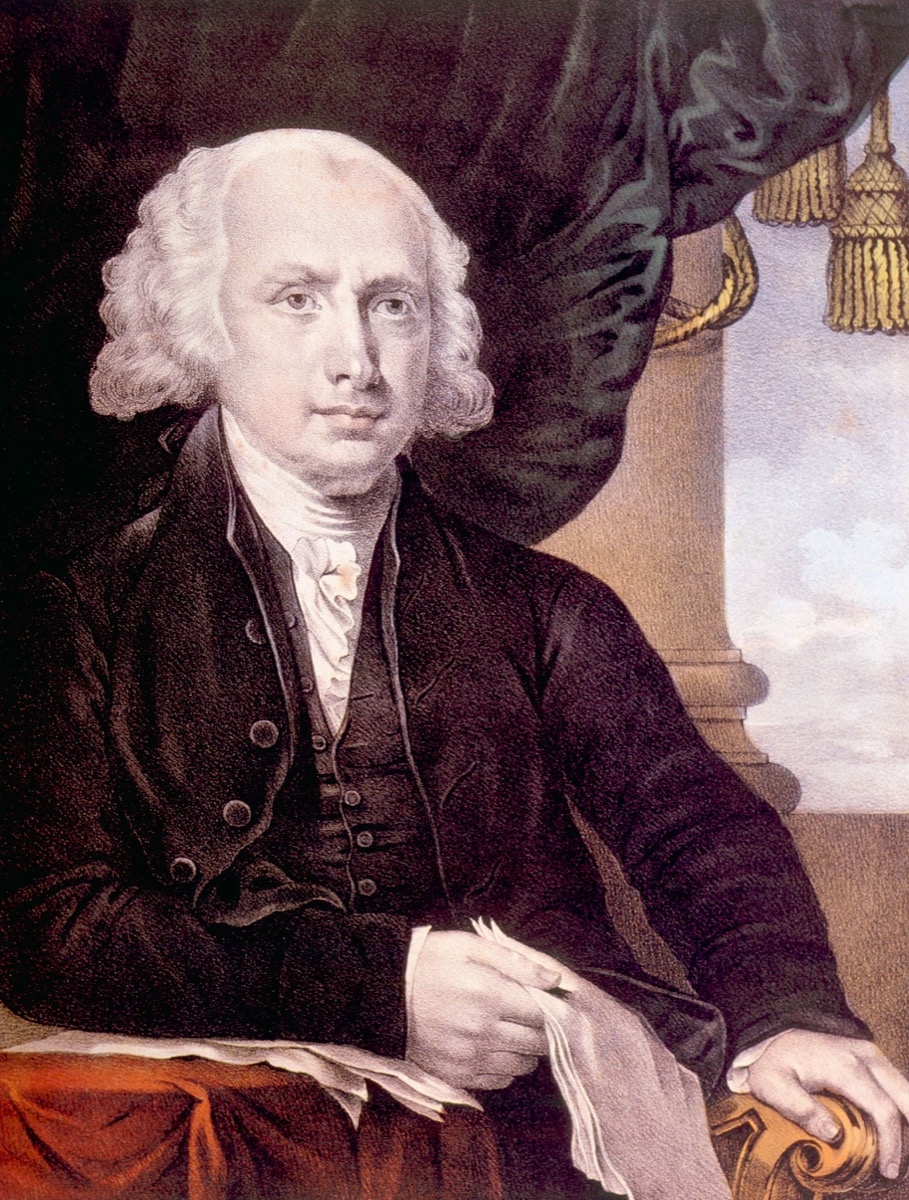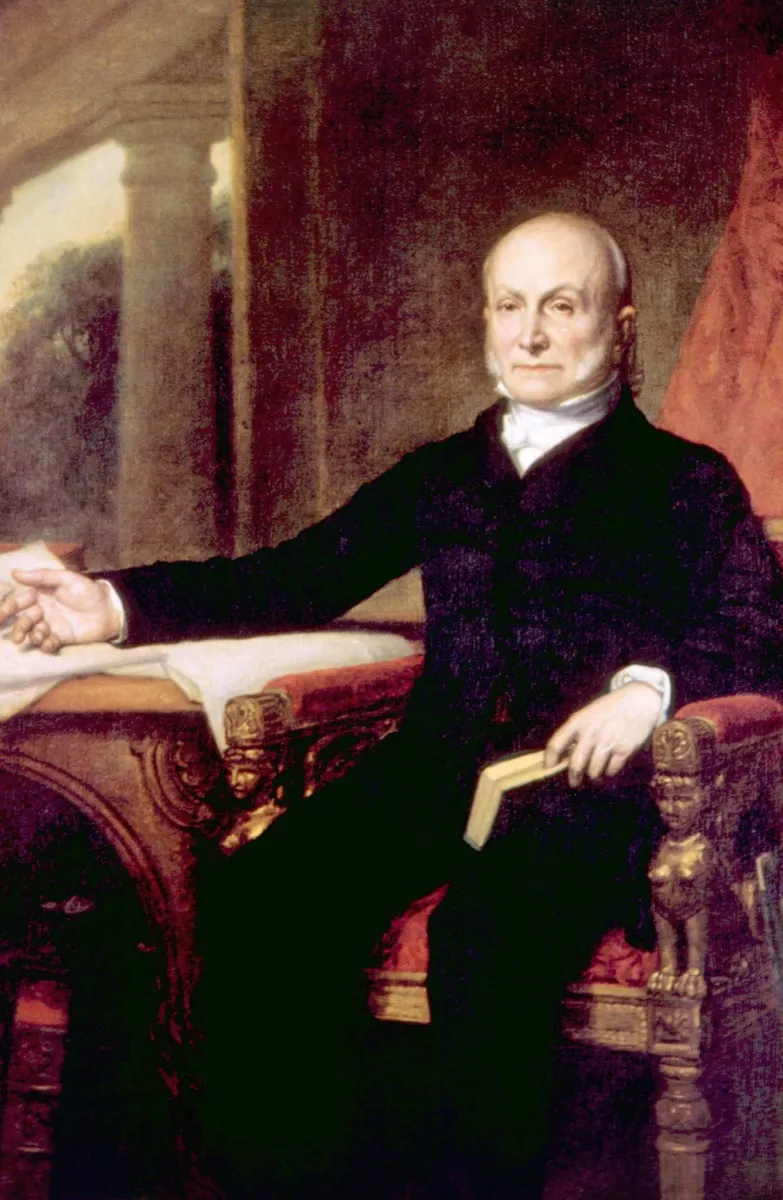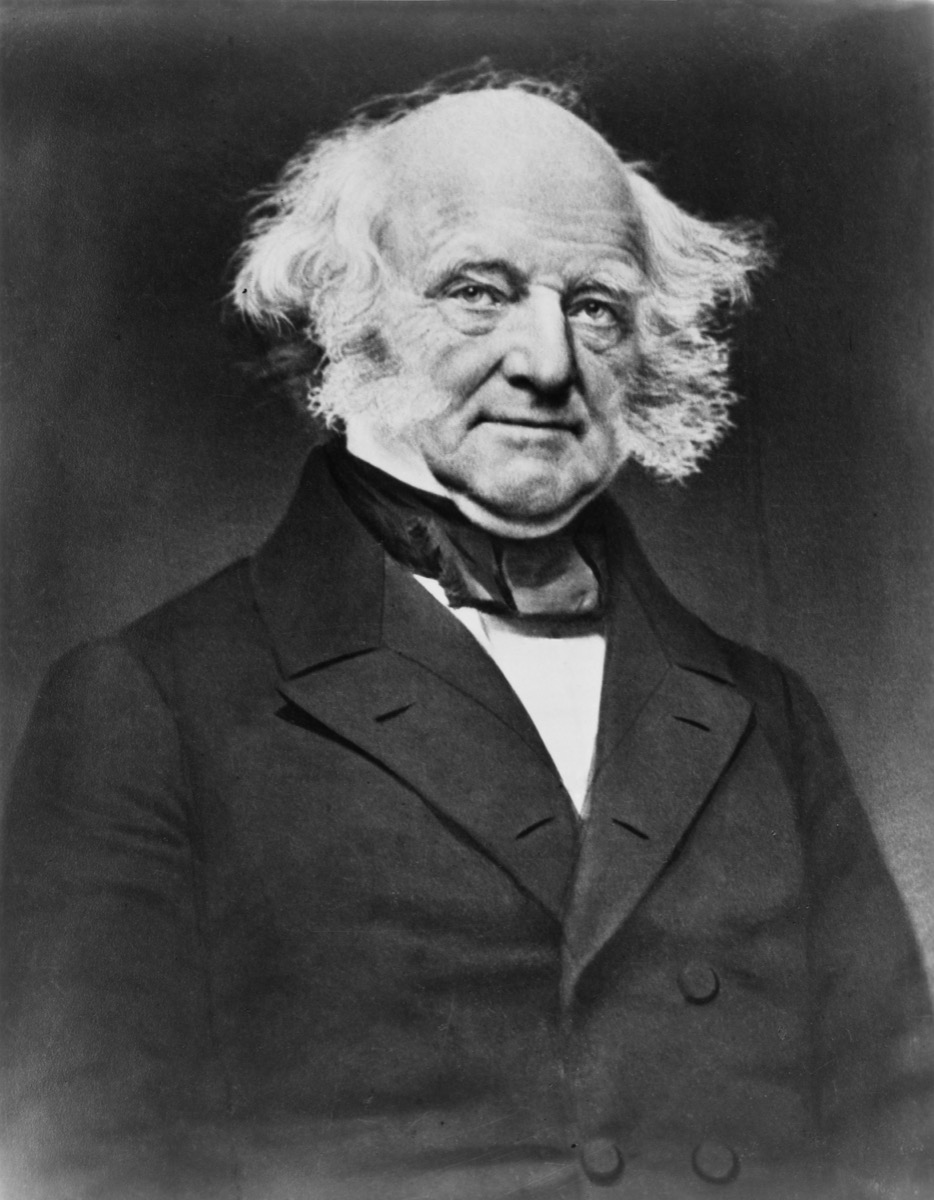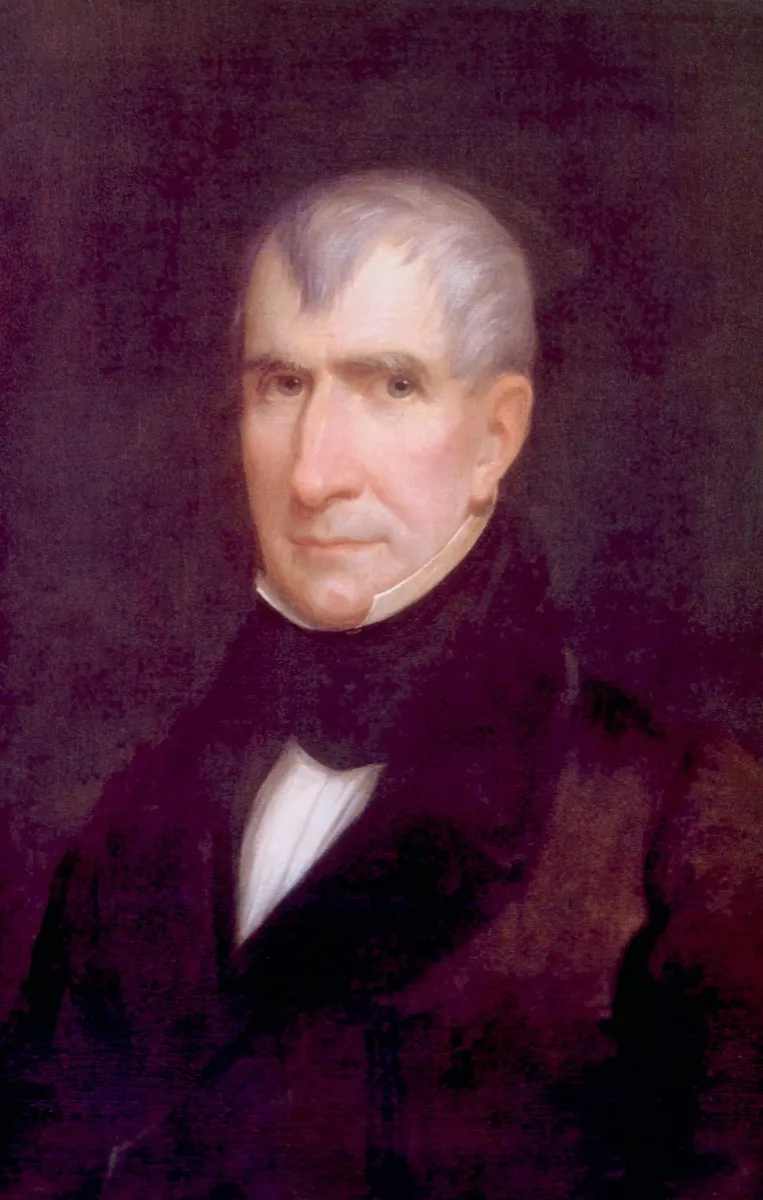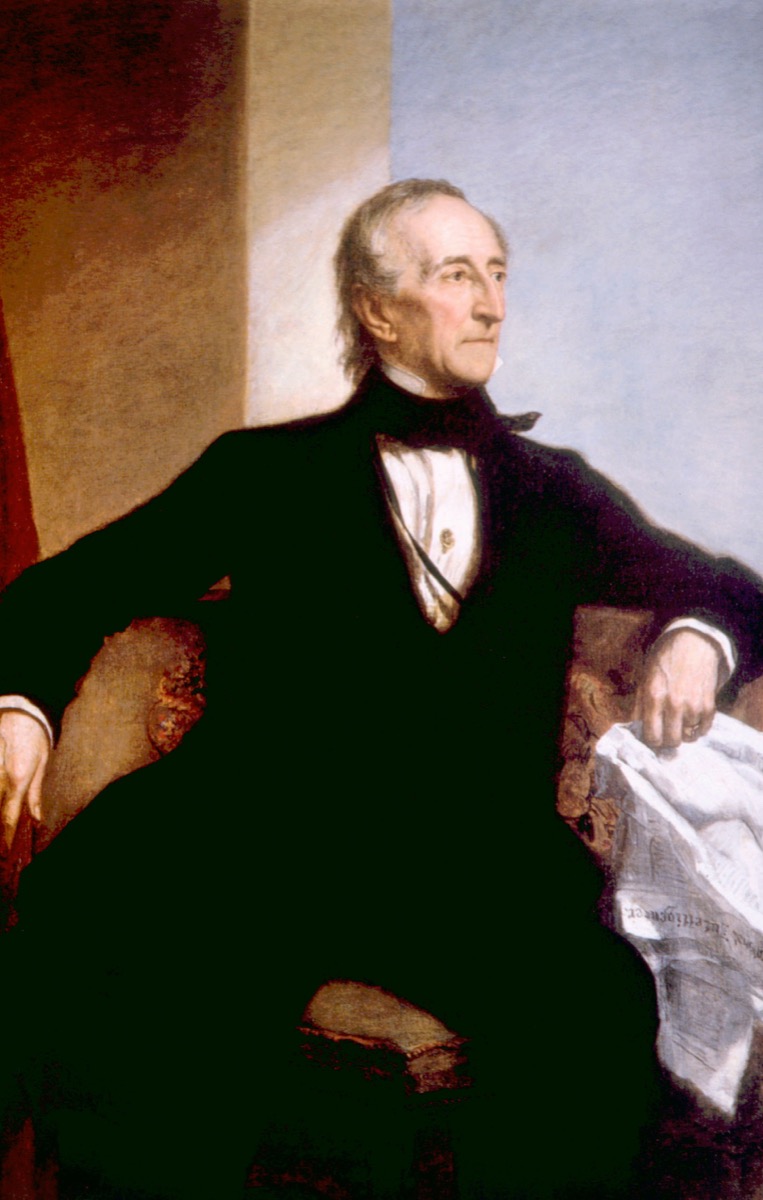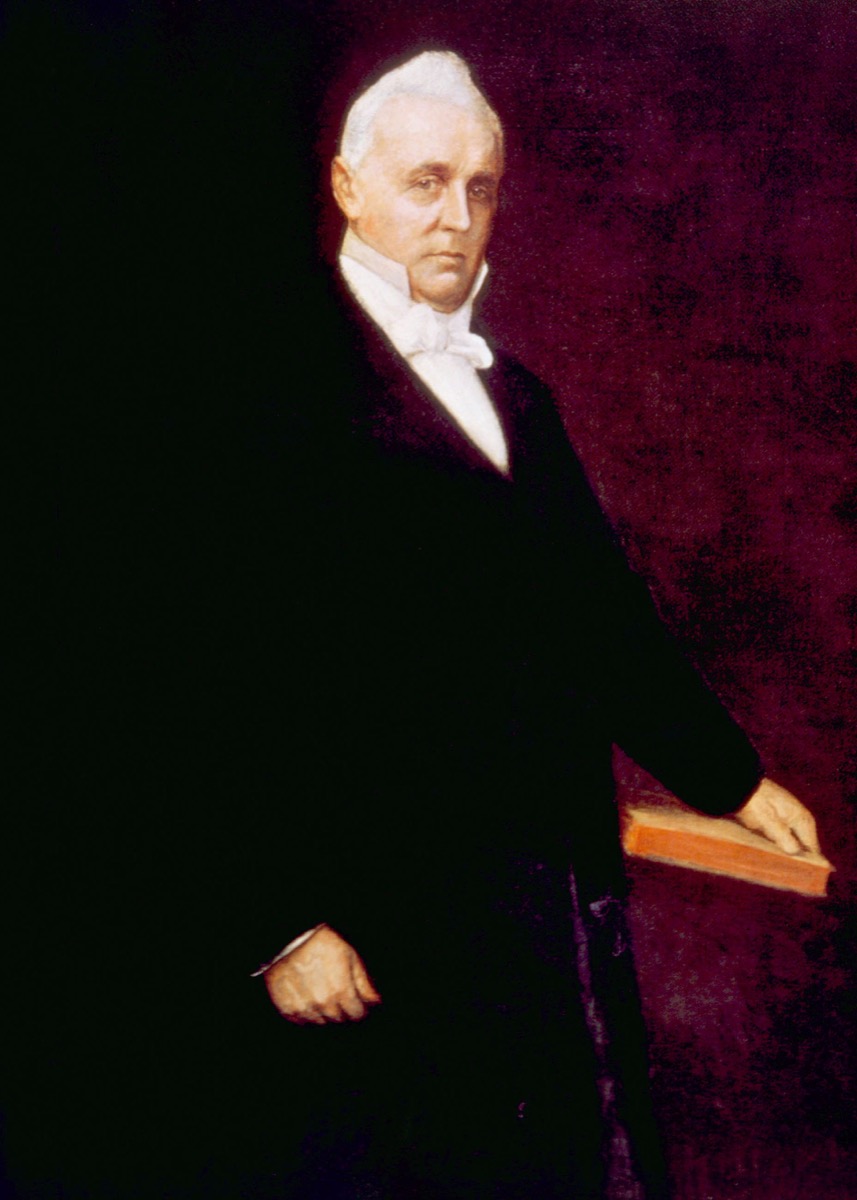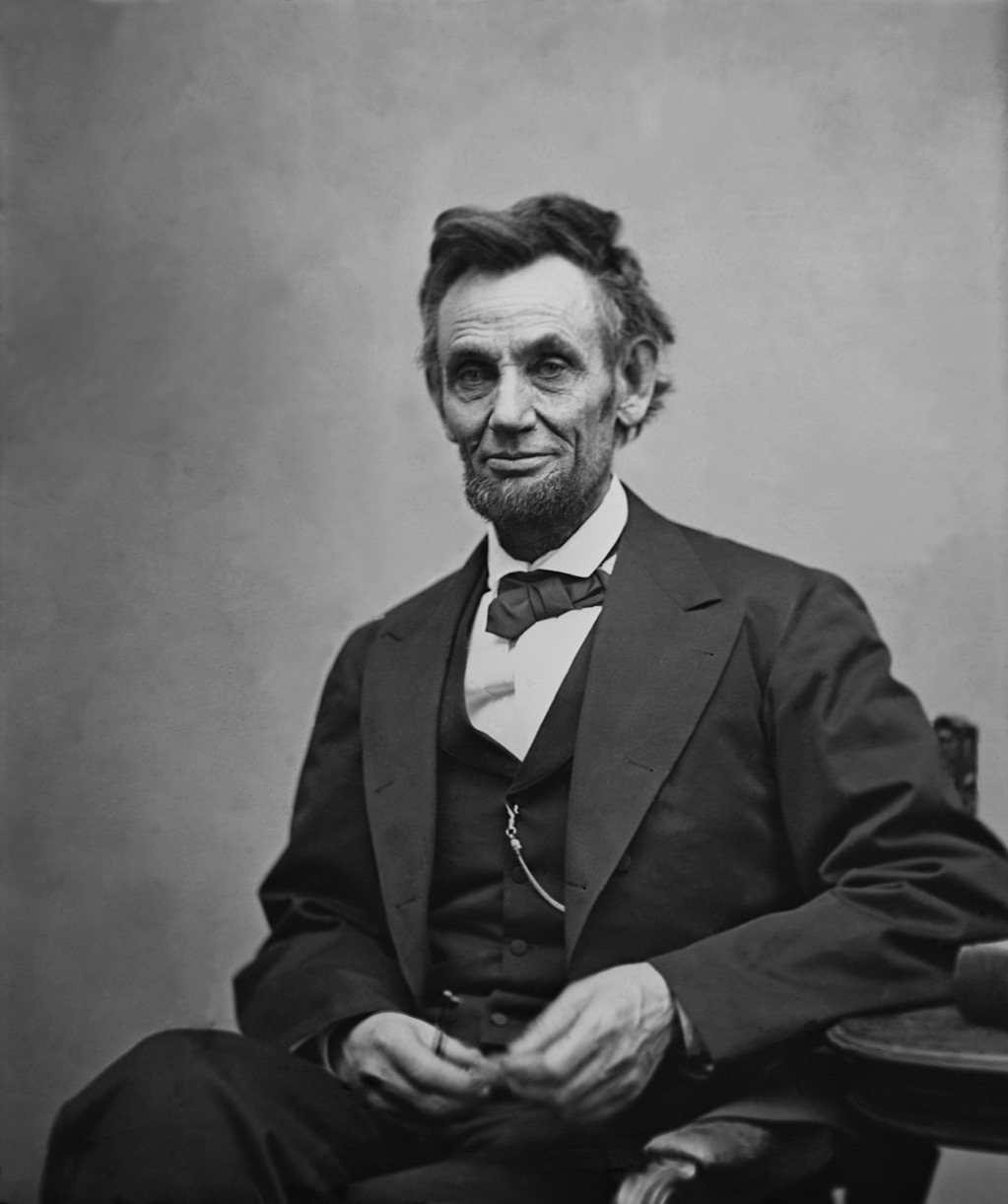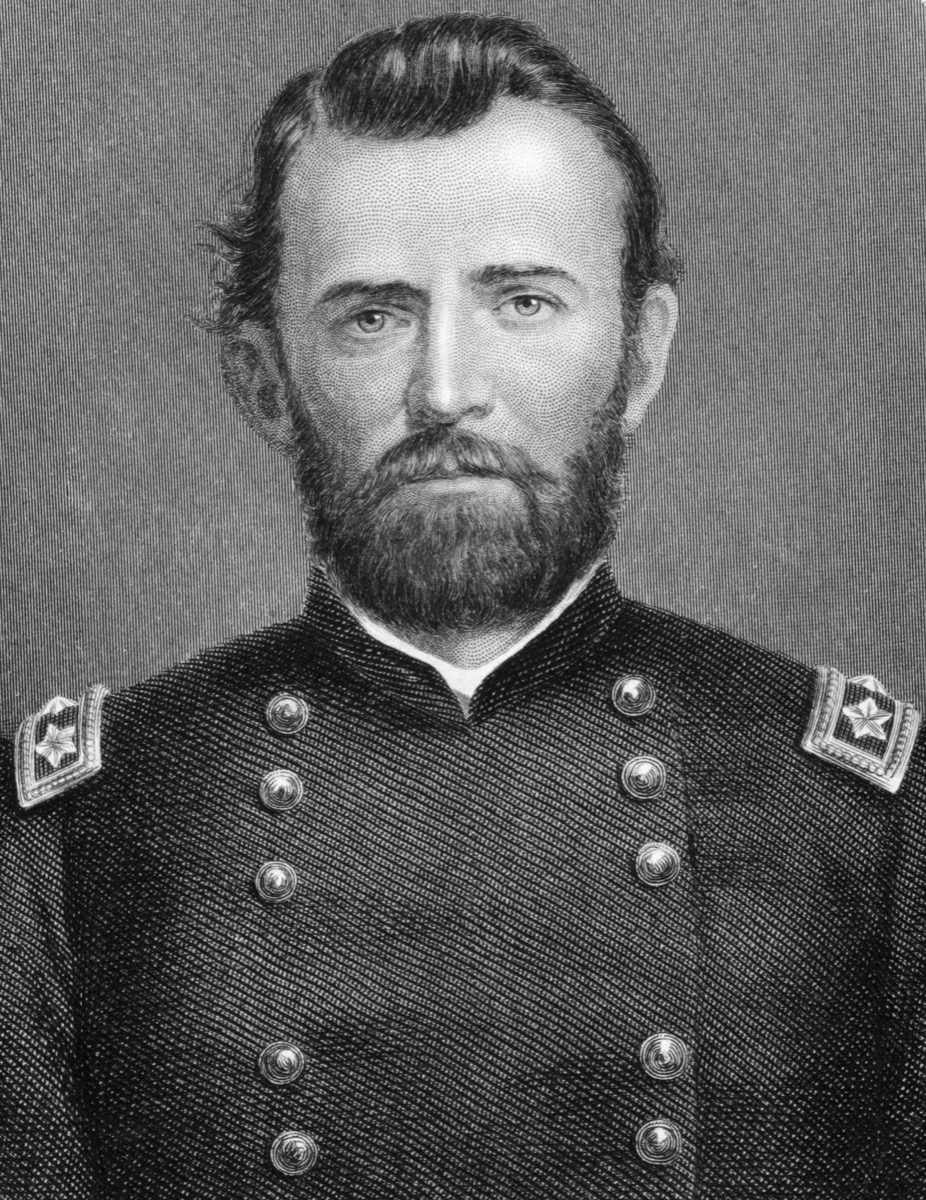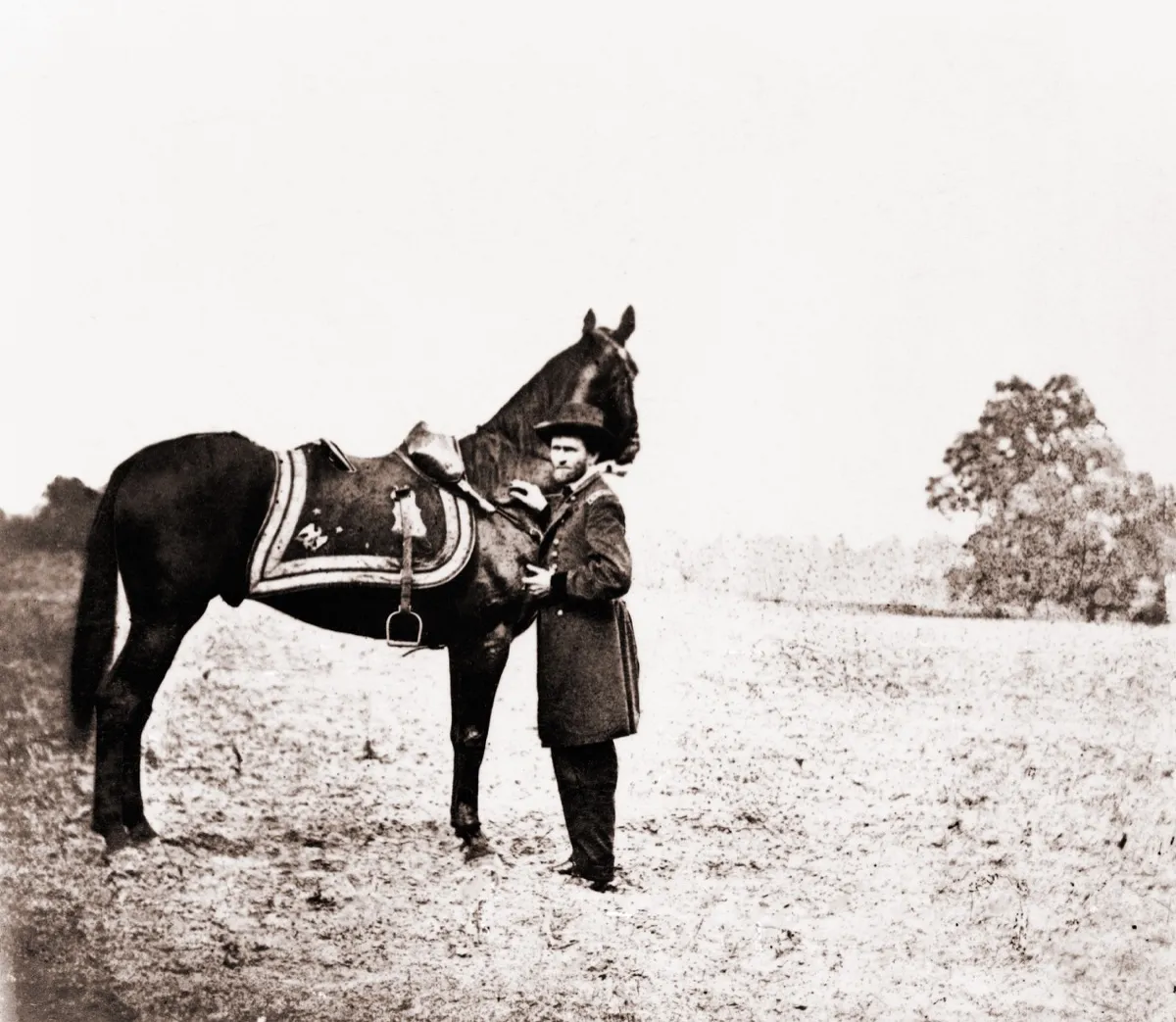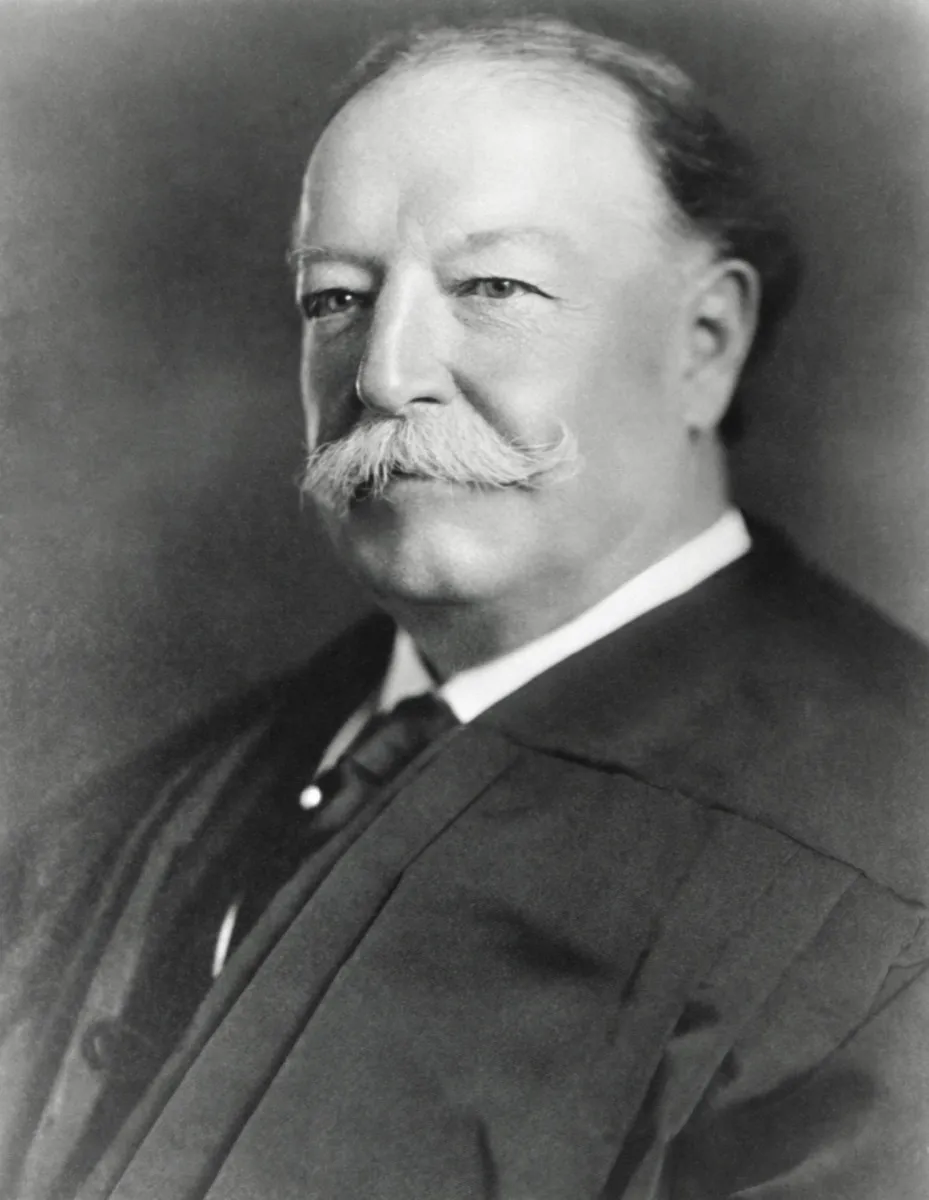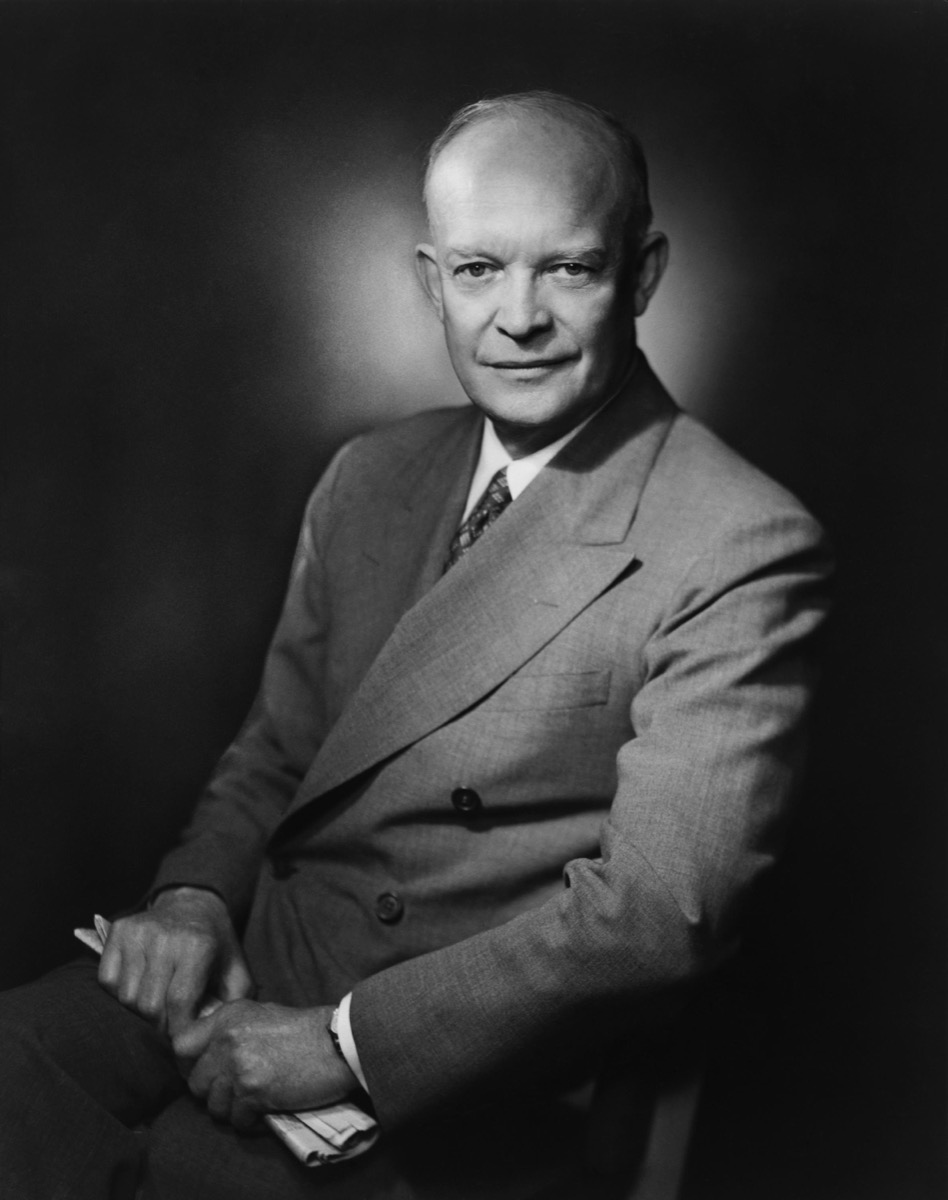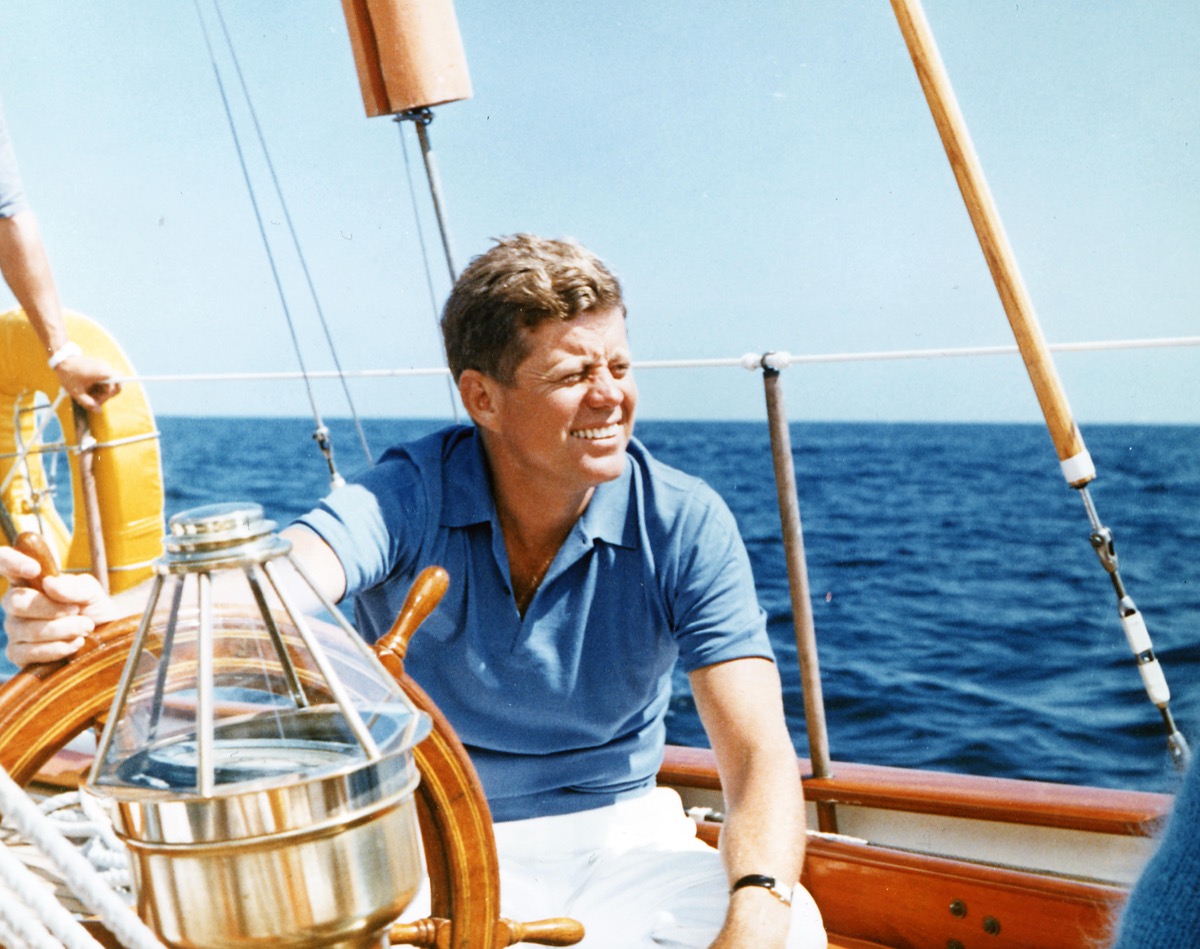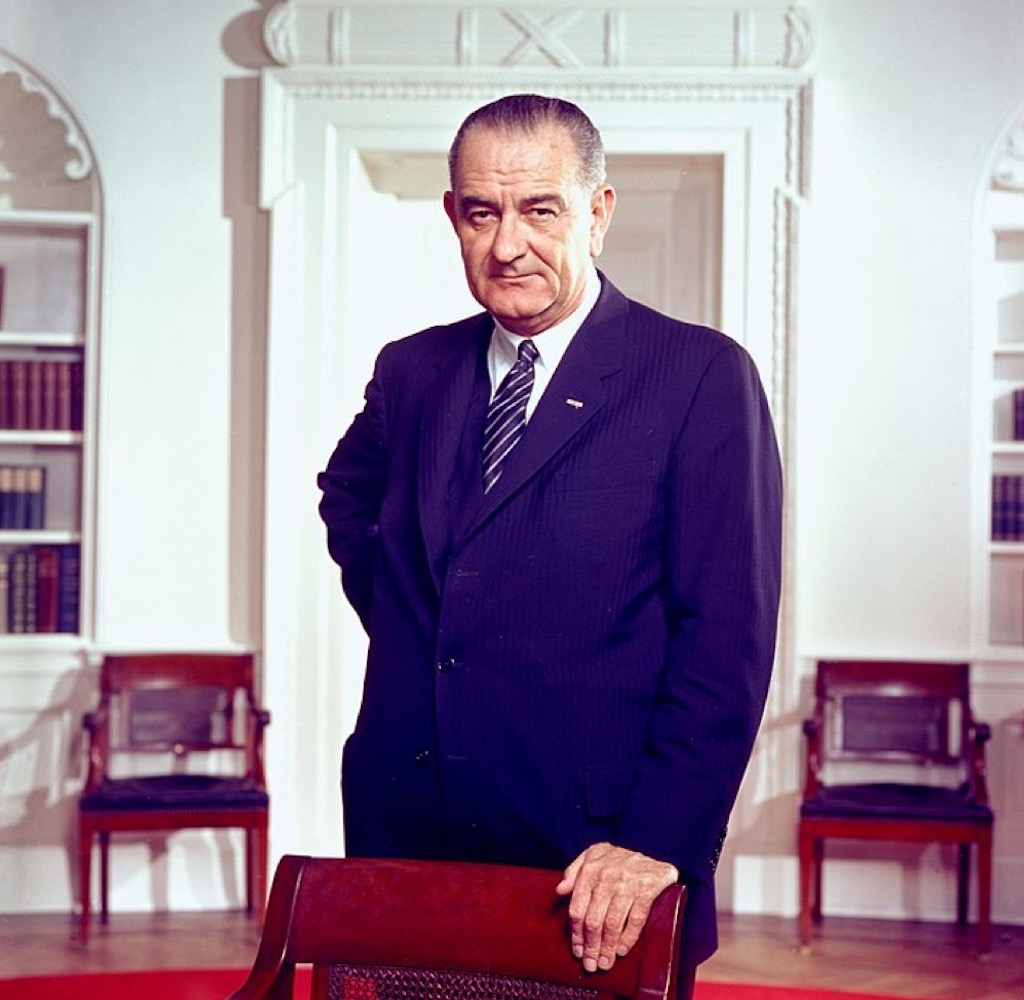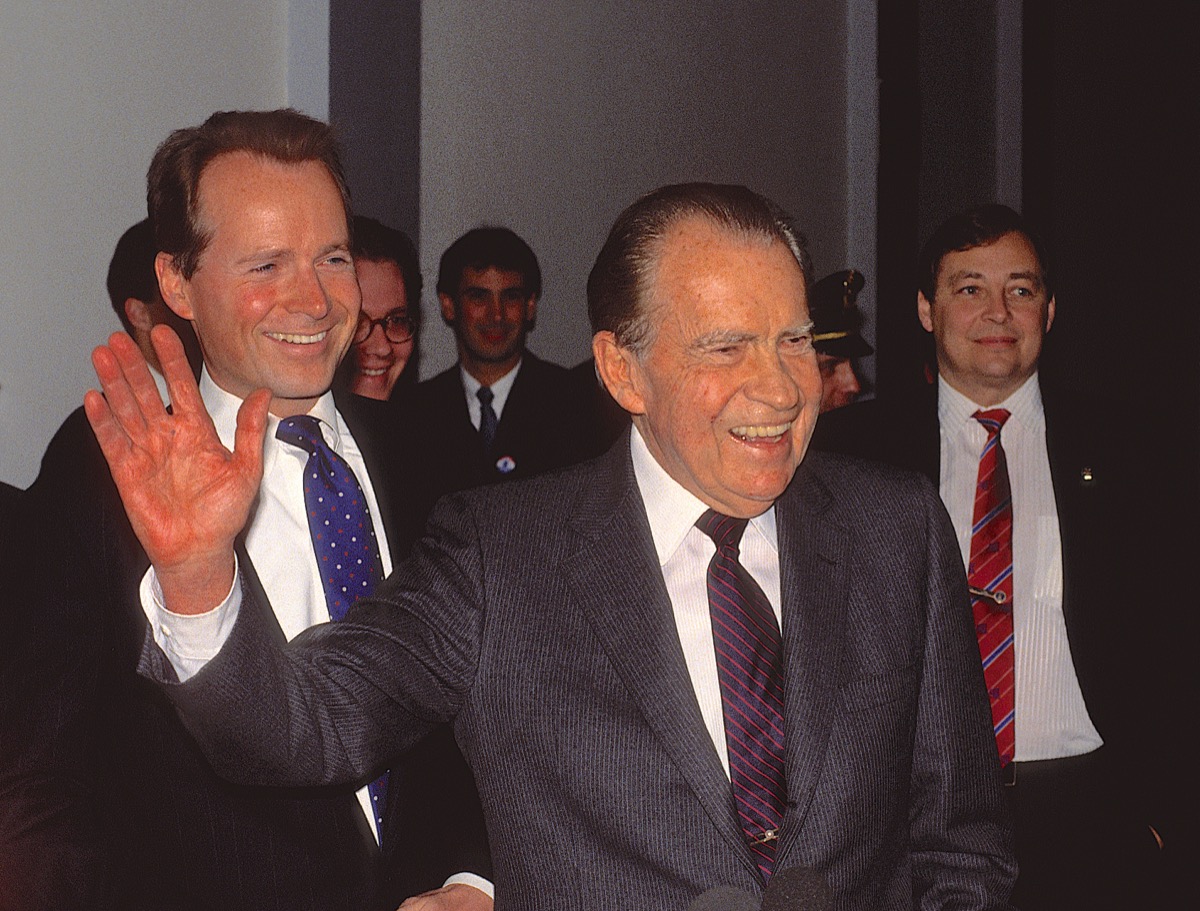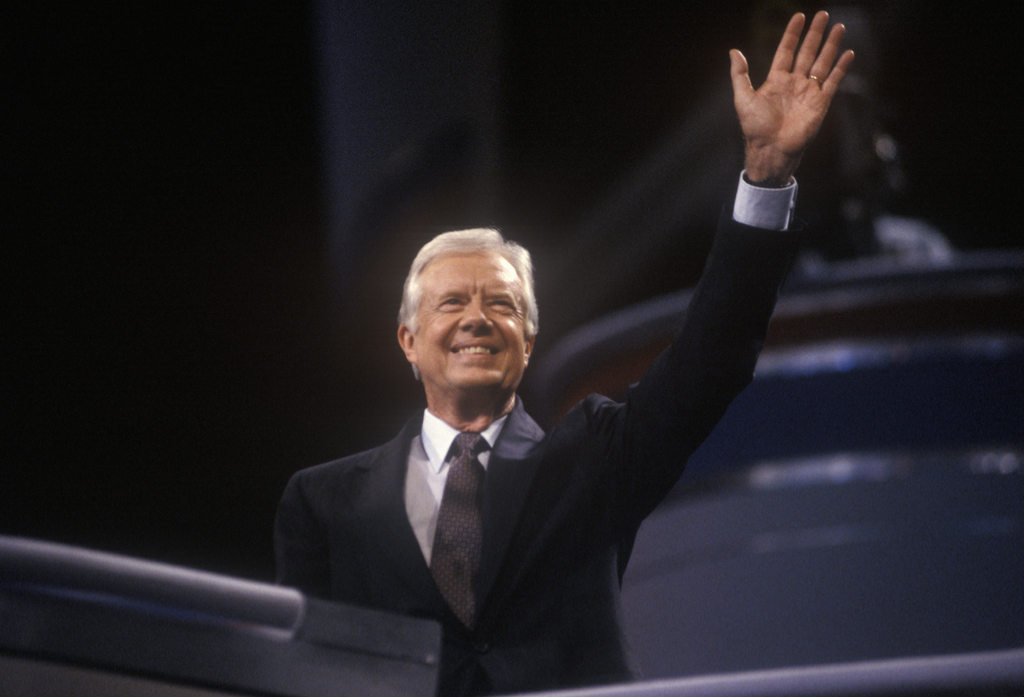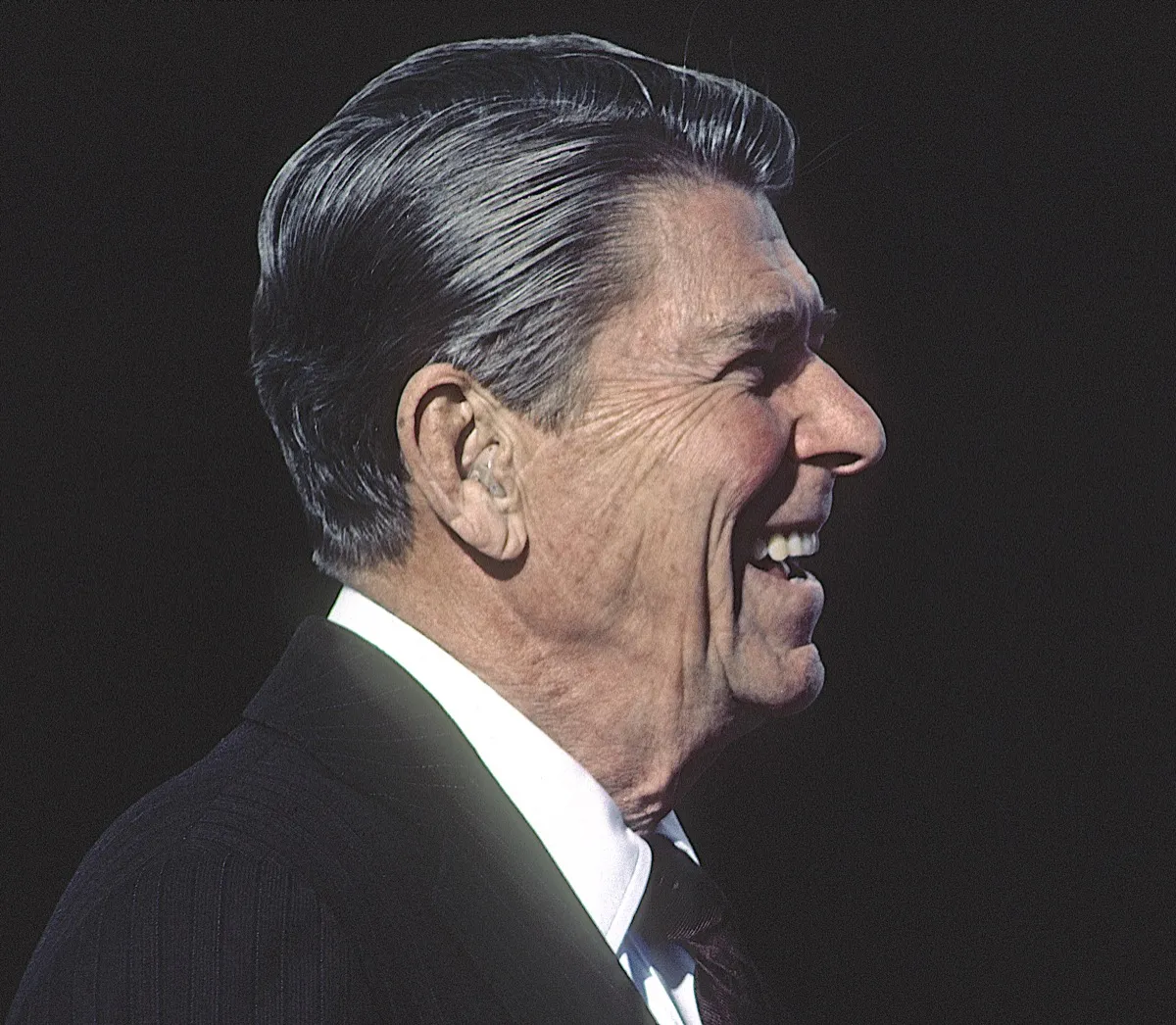George H.W. Bush was famous for his pragmatism. Because he was such a cautious personality, it might surprise one to know that Bush also had an adventurous side—and nowhere was that more evident than in his penchant for skydiving. As a young man, Bush served in World War II as a fighter pilot. In 1944, he was shot down and had to parachute to safety. After that experience, Bush vowed to one day jump out of a plane for fun. He finally did so in 1997, at the age of 72—then again on his 75th, 80th, 85th, and 90th birthdays. By the time of his death in 2018, Bush had made a total of eight parachute jumps. Bill Clinton has more in common with Beyoncé, Eminem, Lady Gaga, and Billie Eilish than you might think. The 42nd president of the United States has not only one Grammy award, he has two of them. Although Clinton is a talented saxophone player—one of the most memorable moments of his first presidential campaign was his 1992 performance on The Arsenio Hall Show—he did not win in a music category. Rather, he won in 2003 for Best Spoken Word Album for Children for narrating Wolf Tracks, a retelling of Peter and the Wolf, and in 2004 in the same category for the audiobook of My Life, his autobiography. Two other presidents, it should be noted, also have won Grammy awards for Best Spoken Word Album: Barack Obama is a fellow two-time winner and Jimmy Carter is a three-time winner. Before he was president, George W. Bush was a cheerleader, a fraternity brother, an oilman, an owner of a professional baseball team, and a governor. Not exactly the profile you’d expect of a budding artist. Nevertheless, an artist is exactly what Bush has become. After leaving office in 2009, Bush learned to paint. Although he initially kept his new hobby a secret, he now shares it openly in hopes that others will be similarly inspired to try new things. In 2017, he even published Portraits of Courage, a book of portraits he painted depicting American veterans. Barack Obama’s love for hoops is well documented. After taking office in 2009, the commander in chief had the White House tennis court modified so that it could be used for either tennis or basketball. And he used it for legendary pickup games with not only friends and staffers, but also with political allies and adversaries, including members of his cabinet. But what you might not know is that Obama’s passion for basketball dates back to his youth. Yes, “Barry” Obama played on his high school team with a group of friends who called themselves the “Rat-ballers” and who gave Obama the nickname “Barry O’bomber” because of the long-range jump shots he loved taking. Presidents have to shake a lot of hands. It comes with the territory. But the current president avoids it whenever he can. In fact, he once called it a “barbaric” custom. That’s because Donald Trump is a self-described germaphobe. Reportedly, Trump washes his hands “as many times as possible” during the day, asks people to leave the room if they cough during a meeting, drinks from a straw instead of straight from a glass in order to avoid contamination, and requires his personal aide to carry hand sanitizer at all times so the president can use it before meals or in between reluctant handshakes. And for more on the health concerns of our nation’s leaders, These U.S. Presidents Also Battled Serious Diseases While in Office. As a kid growing up in Scranton, Pennsylvania, our newest president Joe Biden was bullied relentlessly for what he has called a “debilitating” stutter. “I can think of nothing else that has ever stripped me of my dignity as quickly and as profoundly and as thoroughly as when I stuttered in grade school,” said in a 2008 speech to the American Institute for Stuttering, the Los Angles Times reported in 2019. What helped him become stutter-free orator he is today? Poetry of course. It was the the act of reciting the poems of William Butler Yeats in front of a mirror that taught him to control the problem he was once picked on for. He became president of the United States, and can still recite lengthy passages of Irish poetry from memory to boot. Biden: 1. Bullies: 0 And for some recent COVID news straight from the White House, President Biden Just Gave This Bleak COVID Update. George Washington’s lionized locks are universally recognized thanks to his place on the dollar bill. What’s far less common knowledge, however, is that they were neither fake nor white, as they appear to be in portraits. While it’s true that wigs were popular in Washington’s day, America’s first president preferred his natural hair, which he kept long and wore tied back in a ponytail. Because he still wanted to appear fashionable, however, Washington—a redhead—powdered his hair so that it matched his contemporaries’ white wigs. It was America’s second president, John Adams, who was the first to call the White House home. Adams moved into 1600 Pennsylvania Ave on Nov. 1, 1800, which was the last year of his first and only term. Before that, he—like George Washington before him—lived in “The President’s House,” a three-story brick mansion in Philadelphia. Here’s something else you probably didn’t know about John Adams: He died on the Fourth of July. And he wasn’t the only commander in chief to do so. In fact, three of the nation’s five founding fathers—Adams, Thomas Jefferson, and James Monroe—died on Independence Day. Adams and Jefferson even passed on the same exact day: July 4, 1826, which happened to be the 50th anniversary of the adoption of the Declaration of Independence. Monroe died five years later, on July 4, 1831. Thomas Jefferson was a true renaissance man. He was not only a politician, but also a diplomat, a farmer, a musician, a scholar, and an architect. And he was also an influential chair designer. His biggest contribution? The revolving Windsor armchair—also known as a swivel chair. Although Jefferson’s original chair was constructed by someone else, he modified it by placing an iron spindle between the top and bottom half, which allowed the chair to rotate on casters borrowed from rope-hung windows. He used the chair while writing the Declaration of Independence. And for more facts, news, and entertainment content sent straight to your inbox, sign up for our daily newsletter. Although he’s often credited with doing so, one thing Thomas Jefferson didn’t invent, according to Vice, was ice cream. He did, however, help import it to the United States. Jefferson discovered the frozen treat, the story goes, while he was a diplomat in France. He was hooked. When he returned to America, he brought with him molds and utensils designed especially for ice-cream making. As president, he subsequently served ice cream regularly at the White House, which helped popularize the frozen confection among the American masses. Jefferson even left behind a handwritten ice cream recipe—six egg yolks, half a pound of sugar, two bottles of cream, and one vanilla bean—which is the first known ice cream recipe recorded by an American. At 6 feet 4 inches tall, Abraham Lincoln and Lyndon B. Johnson were America’s tallest presidents. But what about America’s shortest president? That distinction goes to founding father James Madison, who, at 5 feet 4 inches tall, was a full foot shorter than his tallest peers. What James Madison lacked in stature he made up for in intellect. One of three authors behind the famous Federalist Papers, he attended Princeton University—then known as the College of New Jersey—as an undergraduate in 1769. He earned his four-year degree in just two years, graduating in 1771. Because he wasn’t yet sure what he wanted to do with his life, however, Madison received permission to remain at Princeton for a year of “graduate work.” Under the guidance of the school’s president, John Witherspoon, he continued his studies, which he devoted to the subject of Hebrew. Although it subsequently allowed other high-performing scholars to continue studying after receiving a bachelor’s degree, Princeton didn’t formalize its graduate education program until 1869—a full century after Madison went to college. Arguably, some of the most interesting occupants of the White House aren’t the presidents themselves, but their pets—some of which have been downright peculiar. If the lore is true, one of the strangest was probably the pet alligator that John Quincy Adams is said to have kept for two months in the bathtub of the White House’s East Room bathroom. Although there’s some doubt in regards to the story’s veracity, the gator supposedly was a gift from French general and Revolutionary War hero the Marquis de Lafayette. Another presidential pet we’re partial to? Andrew Jackson’s foul-mouthed pet parrot, Poll, who famously squawked obscenities during his funeral. In order to be president, the Constitution states, one must be a natural born citizen of the United States, a resident for at least 14 years, and at least 35 years old. But here’s a curious fact: Although they were all “natural born citizens” by virtue of being born within the territory that was assigned to the United States after the Revolutionary War, the first seven presidents actually began their lives as British subjects, having been born before the United States was a sovereign nation. The eighth president, Martin van Buren, was the first president born and raised entirely as a U.S. citizen. And yet, van Buren was born in the Dutch community of Kinderhook, New York; his first language, therefore, was Dutch, making him the only U.S. president to speak English as his second language. America’s ninth president, William Henry Harrison, was long-winded—but sadly, his presidency was not long-lived. On March 4, 1841, Harrison gave what ended up being the longest-ever inaugural address by a U.S. president—an 8,445-word speech that took him nearly two hours to deliver in cold, blustery weather. A mere 32 days later, he died from pneumonia, which developed from a cold that he contracted while delivering his marathon address. If John Tyler were alive today, he might make a a convincing candidate for starring in his own reality TV show. That’s because he fathered 15 children—more than any other U.S. president. Tyler had eight children with his first wife, Letitia Christian, who died of a stroke in 1842, just one year into Tyler’s first and only term. In 1844, he then married Julia Gardiner, with whom he had another seven children. Because he was still fathering children late in life, some of whom also fathered children late in life, Tyler—who died in 1862—still had two living grandchildren as recently as 2017, according to U.S. News & World Report. Spouses and children are as familiar a factor in presidential politics as shaking hands and kissing babies on the campaign trail. But the country’s 15th president, James Buchanan, was a rare lifelong bachelor in the White House—a soloist, save for his intimate friendship with fellow politician William Rufus DeVane King, with whom some historians speculate he may have had a romantic relationship. If he did, that would make Buchanan not only America’s first and only bachelor president, but also its first and only gay president. The only thing more iconic than Abraham Lincoln’s stovepipe hat is his beard. But Honest Abe didn’t always have that famous facial hair. When he was campaigning for president, he was clean-shaven. In fact, he’d always been clean-shaven. That changed, however, in October 1860, when Lincoln received a letter from an 11-year-old girl named Grace Bedell. “If you will let your whiskers grow I will try and get [my brothers] to vote for you,” Bedell wrote to Lincoln. “You would look a great deal better for your face is so thin. All the ladies like whiskers and they would tease their husbands to vote for you and then you would be president.” Although he made no promises, he responded to Bedell, “Having never worn any whiskers, do you not think people would call it a piece of silly affection if I were to begin?” And less than a month later, Lincoln had a full beard.ae0fcc31ae342fd3a1346ebb1f342fcb Along with the likes of Franklin D. Roosevelt and John F. Kennedy, Ulysses S. Grant is one of a handful of presidents who used a middle initial in his formal written name. But that distinguished “S” is actually an accident. As a young man, the story goes, Grant—whose given name was Hiram Ulysses Grant—was seeking admission to the U.S. Military Academy at West Point. When his congressman nominated him, he mistakenly wrote “Ulysses S. Grant” on the application, presumably because Grant’s mother’s maiden name was Simpson. Although Grant later tried to correct the mistake, West Point would not change its records. When Grant ultimately received his diploma with the errant “S” on it, he therefore resigned himself ever after to signing his name with it. (By the way, Harry S. Truman also has an “S” of unorthodox origin in his name: Although his parents gave him the middle initial “S” in honor of his grandfathers, both of whom had S-names, it doesn’t actually stand for anything.) If you had asked the 19th century policeman who once ticketed Grant, he might have told you that that erroneous middle initial stood for “Speed Demon.” That’s right: When he was president, Grant was pulled over by the cops, who cited him for driving his horse-drawn coach dangerously fast. According to Washington, D.C.’s Metropolitan Police Department, which issued the citation, the president was fined and his vehicle impounded. Here’s a juicy—or not so juicy, depending on your tastes—morsel about William Howard Taft: One of his favorite foods was possum. He liked it so much that he served a 26-pound specimen alongside turkey at his first White House Thanksgiving in 1909. The president’s taste for marsupial meat was no secret. Toymakers therefore tried to exploit it by creating the “Billy possum,” a plush possum that was a Taft-esque take on the Teddy bear, which had been created as an homage to Taft’s predecessor, the merciful bear hunter Theodore Roosevelt. While Teddy bears became an everlasting cultural phenomenon, Billy possums were a short-lived craze that tanked almost as quickly as it took off. Due to a lethal heart attack that cut his term short, Prohibition-era president Warren G. Harding only served two years in the Oval Office. But two years was plenty of time for him to earn a reputation—a mostly negative one, thanks in large part to the company he kept. First of all, there was his official cabinet, several corrupt members of which took bribes. One, Albert Fall, who was Harding’s secretary of the interior, even went to prison for doing so. Then there was Harding’s unofficial cabinet, a scoundrelly group of politicians and businessmen who served as Harding’s friends and advisors. Known as the “Ohio gang” or the “poker cabinet,” they liked to play poker, smoke cigars, and drink bootlegged whiskey. During one of these raucous poker games, legend has it, Harding lost an entire set of White House china that dated back more than 30 years to the presidency of Benjamin Harrison. Between the Great Depression, the New Deal, and World War II, it’s shocking that Franklin D. Roosevelt had any time at all for hobbies. But he did, and his favorite was stamp collecting. He started his collection when he was just 8 years old at the urging of his mother, who also collected stamps. When he later contracted polio as an adult, his collection gave him something to do while he was bedridden. And when he was president, he spent time with his stamps every day as a way to relieve stress. While he was in the White House, Roosevelt personally approved more than 200 stamp designs, and even had the opportunity to sketch numerous ideas for designs of his own. At the time of his death in 1945, the president’s stamp collection included more than 1.2 million stamps, most of which were sold at public auction in accordance with his wishes. Dwight D. Eisenhower became president largely because of his distinguished military career—a five-star general, he spent 35 years in the U.S. Army and served both in World War I and World War II. During the latter, he was named Supreme Commander of Allied Expeditionary Forces, a position in which he led Operation Overlord, the invasion of Europe that famously began on “D-Day” in June 1944. But one thing his vast military résumé is missing that you probably assumed it had? Combat experience. Everyone knows John F. Kennedy was assassinated in Dallas, Texas, on Nov. 22, 1963. But did you also know that he had narrowly averted death five times before that fateful day? His first brush with death occurred in childhood: At age 2, Kennedy nearly died from scarlet fever. His second brush occurred during World War II, when 26-year-old Kennedy was in the Navy. While cruising the Pacific, a Japanese destroyer collided with his vessel and caused it to explode, after which Kennedy had to swim for four hours to find the nearest island. Brush number three came four years later, when Kennedy was hospitalized and diagnosed with Addison’s disease, a rare adrenal disorder. When the illness recurred years later, Kennedy nearly died a fourth time. His fifth and final near-death experience came in 1954, when Kennedy developed a post-surgical urinary tract infection that was exacerbated yet again by his Addison’s disease. During two of Kennedy’s experiences he ended up in a coma, and during four of them, a priest went so far as to administer him his last rites.
At 6 feet 4 inches tall, Lyndon B. Johnsonwas an intimidating presence. First as a senator, then as president, he used his size to his advantage. It wasn’t enough to merely tower over his fellow politicians, however. To get what he wanted from them, he used what became known as the “Johnson treatment.” Along with a verbal approach that newspaper columnist Mary McGrory once described as “an incredible, potent mixture of persuasion, badgering, flattery, threats, reminders of past favors and future advantages,” it included a masterful physical technique: When he wanted something from someone, Johnson would pierce their personal bubble by leaning into them and speaking with his face only mere inches from theirs. Richard Nixon was hardly the first president who liked to unwind by rolling a few strikes. Harry S. Truman also enjoyed bowling, and opened the first White House bowling alley in 1947. Although Dwight D. Eisenhower closed it in 1955 to make way for a mimeograph room, it subsequently was rebuilt in a new location, where Lyndon B. Johnson used it frequently. Nixon liked bowling so much that one alley at the White House wasn’t enough. He therefore had a second one installed underground, directly beneath the White House’s North Portico entrance. Because the first alley was open to White House staffers, Nixon preferred the second, more private facility. But was he any good? Nixon reportedly once bowled a 232. Impressive. If you had to bet on which U.S. president was the biggest movie fan, you’d probably put your money on America’s actor-turned-president, Ronald Reagan. And that would be a great guess. Reagan reportedly watched 363 movies during his two terms in office. There was at least one president who outwatched him, however: Jimmy Carter. Although he was the opposite of a “Hollywood” president, the former peanut farmer nevertheless watched more than 400 films while he was commander in chief—and he held office for only four years, half of Reagan’s eight! Among the many flicks that Carter watched in the White House were Apocalypse Now, Shane, Alien, The Empire Strikes Back, All the President’s Men, Airplane, and Caddyshack. He even watched what has to be one of the least “presidential” films of all time: Animal House. Thanks to its inaction during the AIDS epidemic, the Reagan administration doesn’t have the greatest reputation when it comes to public health. Still, Reagan did at least one positive thing in this area: He helped destigmatize hearing loss. The former actor became hard of hearing in his right ear when a fellow performer fired a pistol near his head while they were filming a movie. His hearing degraded further as he aged, and in 1983—at the age of 72—he began wearing a hearing aid. At that time, hearing loss was synonymous with decrepitude. By wearing his in public, however, Reagan normalized hearing aids, so much so that Starkey Laboratories, the company that made the president’s device, quadrupled its sales after Reagan went public with his hearing loss. To learn about surprising presidential health standards, read Is the President’s Yearly Physical Different Than Yours? Additional reporting by Alex Daniel.
